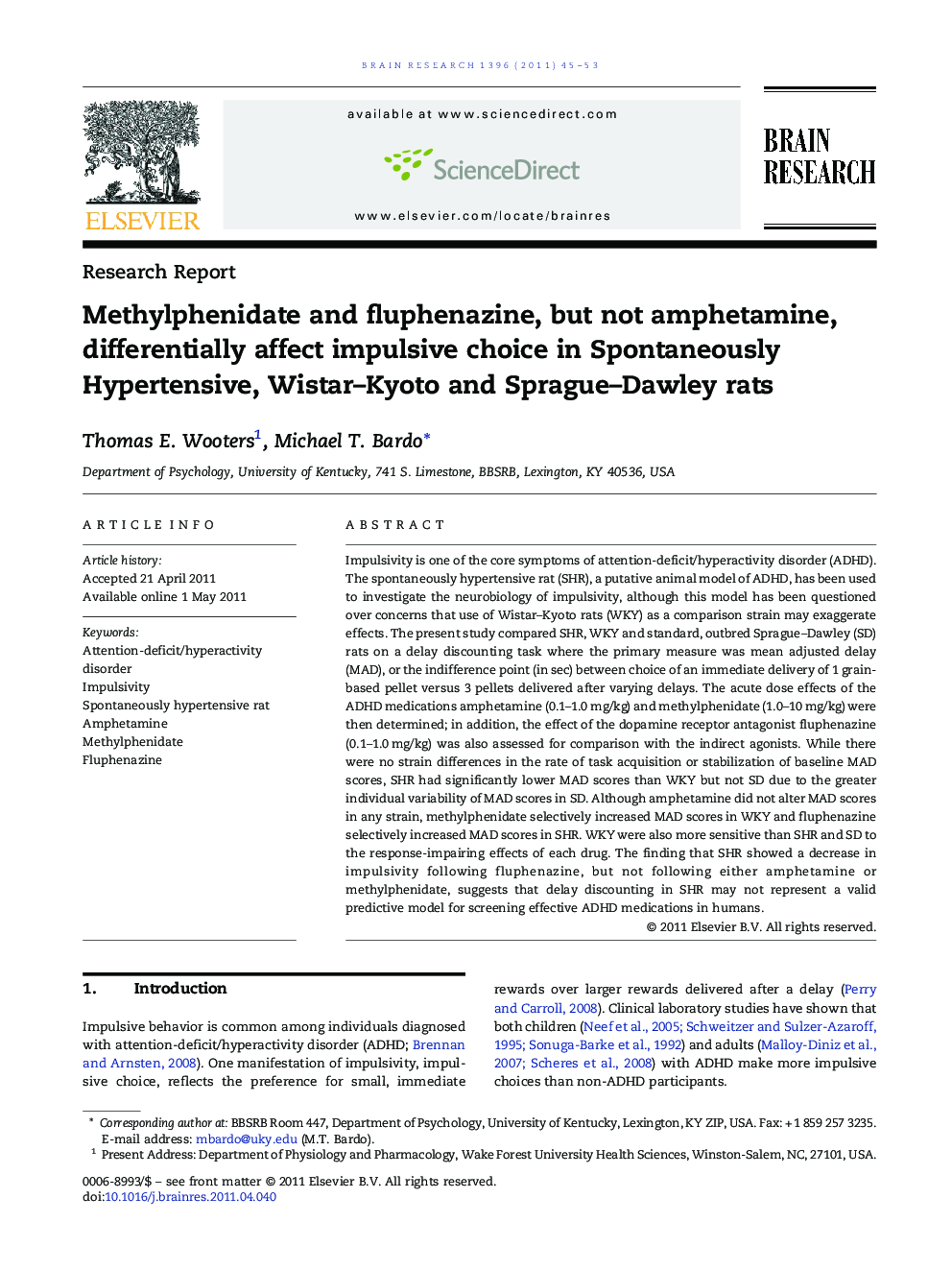| کد مقاله | کد نشریه | سال انتشار | مقاله انگلیسی | نسخه تمام متن |
|---|---|---|---|---|
| 4325877 | 1614043 | 2011 | 9 صفحه PDF | دانلود رایگان |

Impulsivity is one of the core symptoms of attention-deficit/hyperactivity disorder (ADHD). The spontaneously hypertensive rat (SHR), a putative animal model of ADHD, has been used to investigate the neurobiology of impulsivity, although this model has been questioned over concerns that use of Wistar–Kyoto rats (WKY) as a comparison strain may exaggerate effects. The present study compared SHR, WKY and standard, outbred Sprague–Dawley (SD) rats on a delay discounting task where the primary measure was mean adjusted delay (MAD), or the indifference point (in sec) between choice of an immediate delivery of 1 grain-based pellet versus 3 pellets delivered after varying delays. The acute dose effects of the ADHD medications amphetamine (0.1–1.0 mg/kg) and methylphenidate (1.0–10 mg/kg) were then determined; in addition, the effect of the dopamine receptor antagonist fluphenazine (0.1–1.0 mg/kg) was also assessed for comparison with the indirect agonists. While there were no strain differences in the rate of task acquisition or stabilization of baseline MAD scores, SHR had significantly lower MAD scores than WKY but not SD due to the greater individual variability of MAD scores in SD. Although amphetamine did not alter MAD scores in any strain, methylphenidate selectively increased MAD scores in WKY and fluphenazine selectively increased MAD scores in SHR. WKY were also more sensitive than SHR and SD to the response-impairing effects of each drug. The finding that SHR showed a decrease in impulsivity following fluphenazine, but not following either amphetamine or methylphenidate, suggests that delay discounting in SHR may not represent a valid predictive model for screening effective ADHD medications in humans.
Research highlights
► The SHR (SHR) is a widely-used animal model of ADHD; WKY is a common control strain.
► The use of WKY controls is questioned due to a phenotype that may inflate differences with SHR.
► The current study compared SHR and WKY with Sprague–Dawley (SD) rats on an impulsivity task.
► SHR were the most impulsive strain, but differed significantly only from WKY, not SD.
► Fluphenazine and methylphenidate, but not amphetamine, differentially altered impulsivity; WKY were most impaired by these drugs.
Journal: Brain Research - Volume 1396, 17 June 2011, Pages 45–53